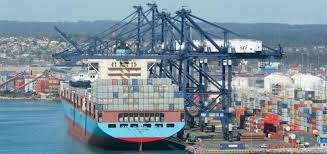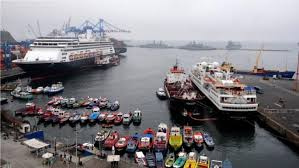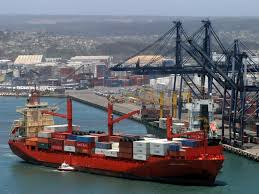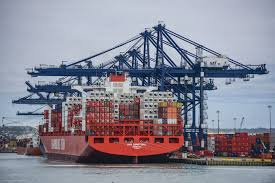What is the Port of San Antonio known for?

What is the Port of San Antonio known for?
What is the Port of San Antonio known for? The Port of San Antonio, located on the central coast of Chile, is one of the country’s most important maritime hubs.
It plays a crucial role in both national and international trade, making it a vital component of Chile’s economy.
Historical Significance
Established in the early 19th century, the port has a rich history that reflects the growth of Chile as a trading nation.
Originally used for shipping agricultural products, it quickly evolved into a major export center for minerals and seafood.

Strategic Location
San Antonio’s geographic position makes it ideal for shipping.
Nestled between Santiago and the Pacific Ocean, it serves as a gateway for imports and exports.
The port’s proximity to major highways facilitates efficient transportation to and from the capital.
Cargo and Trade
The Port of San Antonio handles a diverse range of cargo, including containers, bulk goods, and vehicles.
It is particularly known for its container traffic, making it one of the busiest ports in Chile.
The port’s facilities are equipped to manage significant volumes of cargo efficiently.
Economic Impact
As a key player in Chile’s economy, the Port of San Antonio generates thousands of jobs for local residents.
It also supports various industries, including logistics, shipping, and transportation.
The economic activity surrounding the port contributes to the development of the entire region.
Seafood Industry
One of the standout features of the Port of San Antonio is its bustling seafood industry.
The port serves as a hub for exporting fresh seafood to international markets, particularly salmon and shellfish.
This aspect not only boosts the economy but also highlights the importance of marine resources in Chile.
Modern Infrastructure
The Port of San Antonio boasts modern infrastructure designed to handle large volumes of cargo.
Recent investments have improved its facilities, making it more competitive on a global scale.
State-of-the-art cranes and loading equipment ensure efficiency in operations.
Environmental Considerations
With the growth of the port, environmental concerns have come to the forefront.
Efforts are being made to minimize the ecological impact of port operations.
Sustainable practices are increasingly adopted, focusing on reducing emissions and protecting marine ecosystems.
Tourism Potential
While primarily known for its commercial activities, the Port of San Antonio also has potential for tourism.
Cruise ships are beginning to stop at the port, offering tourists a glimpse of the vibrant coastal culture.
The scenic beauty of the surrounding area adds to its appeal.
Local Culture and Community
The port is not just an economic engine; it is also a cultural hub for the local community.
Festivals and events often celebrate maritime heritage and local traditions.
Residents take pride in their connection to the sea and the port’s history.
Connectivity and Accessibility
Accessibility is one of the port’s key strengths.
With well-developed road and rail networks, it is easy for goods to reach their destinations.
This connectivity enhances the port’s role as a central logistics hub.
Challenges Ahead
Despite its many strengths, the Port of San Antonio faces challenges.
Competition from other ports, both within Chile and abroad, is intensifying.
Adapting to changing trade patterns and environmental regulations will be crucial for its continued success.
Future Prospects
Looking ahead, the Port of San Antonio is poised for growth.
Plans for expansion and modernization are already underway, aimed at increasing capacity and efficiency.
Investments in technology and infrastructure will enhance its global competitiveness.
A Multifaceted Hub
In conclusion, the Port of San Antonio is much more than a shipping terminal.
It embodies a blend of history, culture, and economic vitality.
As it continues to evolve, the port will play an even more significant role in Chile’s future.





Leave a Reply